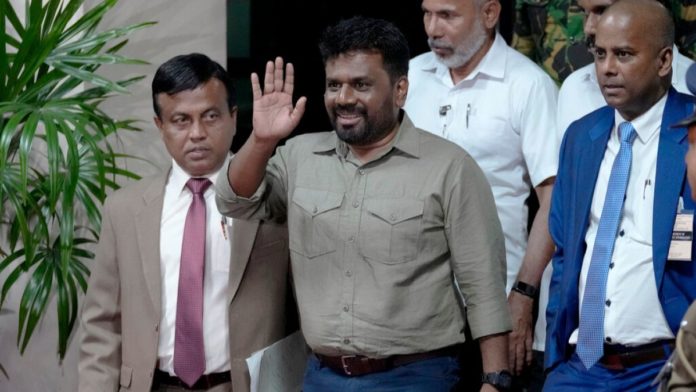Over a year since protests rocked the South Asia country of Sri Lanka, the nation has voted in a new leader in an effort to recover from its worst economic crisis and resulting political upheaval.
Leftist leader Anura Kumara Dissanayake has been sworn in as Sri Lanka’s 10th president.
His success was won during an election that saw voters reject an old guard accused of leading the country into economic crisis and following days-long riots, which spread into the presidential house and office in the country’s capital, Colombo.
Dissanayake, 55, ran as head of the Marxist-leaning National People’s Power (NPP) coalition and defeated opposition leader Sajith Premadasa and 36 other candidates.
Dissanayake received 5,740,179 votes, followed by Premadasa with 4,530,902.
Indian Prime Minister Narendra Modi congratulated Dissanayake on his win, stating on social media platform X that he looks forward to pursuing and strengthening cross-country policies, such as the Neighbourhood First Policy.
The weekend election was crucial as the country seeks to recover from its worst economic crisis and resulting political upheaval.
He’s the 10th person to hold Sri Lanka’s powerful executive presidency — created in 1978 when a new constitution expanded the office’s powers.
Who is the new president?
Dissanayake’s coalition is led by the Janatha Vimukthi Peramuna, or People’s Liberation Front, a Marxist party that waged two unsuccessful armed insurrections in the 1970s and 1980s to capture power through socialist revolution.
After its defeat, the JVP entered democratic politics in 1994 and has been mostly in opposition since then. However, they have supported several previous presidents and been part of governments briefly.
The NPP grouping also includes academics, civil society movements, artists, lawyers and students.
Dissanayake was first elected to parliament in 2000 and briefly held the portfolio of agriculture and irrigation minister under then-President Chandrika Kumaratunga.
He ran for president for the first time in 2019 and lost to Rajapaksa, who was ousted over the economic crisis two years later.
That economic crisis resulted from excessive borrowing to fund projects that did not generate revenue, the impact of the COVID-19 pandemic, and the government’s insistence on using scarce foreign reserves to prop up its currency, the rupee.


